 |
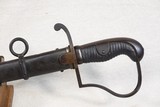 |
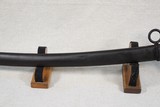 |
 |
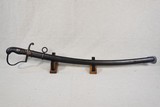 |
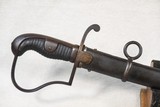 |
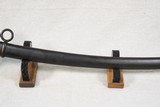 |
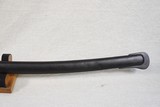 |
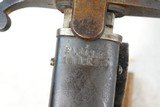 |
 |
 |
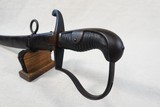 |
 |
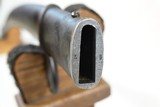 |
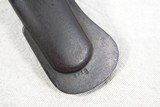 |
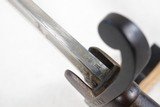 |
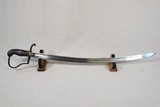 |
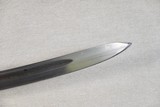 |
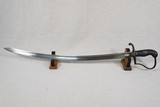 |
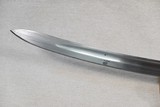 |
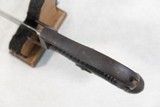 |
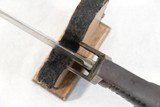 |
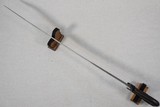 |
 |

1903 Vintage Imperial German Military Model 1873-96 Artillery Sword & Scabbard w/ Unit Markings ** P.D. Luneschloss / Erfurt Ricasso Stamps **
Guns International #: 102312770 Seller's Inventory #: BP22-179
Category: Collectibles - WWI - Edged Weapons Post 1900
Seller's Information
When emailing or calling sellers direct, please mention that you saw their listing on GunsInternational.com
Seller: Antique & Modern Firearms, Inc.
Company: Antique & Modern Firearms, Inc.
Member Since: 4/27/15
State: Kentucky
Zip: 40503
Country: United States
Phone: (859) 276-1419
Fax: (859) 278-0838
Number of Active Listings: 0
Total Number of Listings: 16139
Seller: FFL Dealer
Return Policy: 3 day inspection and return policy on used guns.
Payment Types Accepted: Visa,Master Card, Discover,Check
Description:
This is a very neat all-original Imperial German Model 1873 Artillery Sword and scabbard complete with matching unit markings and serial numbers. The Model 1873-96 Artillery Sword was developed directly from the Prussian "Blucher" Saber of 1811 which remained in service until 1857. Following the victory of the newly formed German empire over France in 1871, The German empire sought to reform and reorganize it's army and equipment. The "New Style Artillery Trooper Saber" or Model 1873 was one of the new weapons developed for issue. This sword would go on to be refined with small changes as the years passed until the final version was finally settled on in 1896. This is why these are most correctly called the Model 1873-96 rather than M73 or M96. This particular example was built in 1903 by P.D. Luneschloss of Solingen Germany and is so-marked on the left ricasso of the blade. It is marked with an Erfurt crown on the right ricasso. Both of these markings are hard to see and impossible to take pictures of due to the protective fingers that extend from the crossguard. It is constructed entirely of steel except for the handle, which is grooved hardwood without any leather covering or wire wrap. It is a very heavy duty sword, meant for actual combat and was not just for show. As these were issued overwhelmingly to artillery unit personele, the soldiers that carried these were meant to use them alongside their sidearms as the last line of defense for their artillery pieces in close quarters combat. The blade on this sword is curved and just over 30" inches in length, with an overall length of just under 35.25" inches to the end of the handle fastener on the butt. The handle has a steel backstrap with two reinforcement fingers that extend downward on each side of the wood handle and have a P-shaped knuckle bow with a slot cut into the rear curve for a sword knot. Everything is held together on the handle with steel rivets. The substantial crossguard on this sword is 5" inches long and tapers on the top side to the underside of a forward curved ball engineered to catch an enemy soldier's blade or bayonet when fighting in very close quarters. The two fingers that extend downward to the blade on either side of the crossguard are for the same purpose, if you used your sabre to block a swing from a sword or mounted bayonet-wielding enemy their blade would ride down your blade and get caught by these fingers with a slight twist of the wrist by the soldier using this sabre rather than cutting the soldiers hand or fingers. Once caught, the enemy's weapon could be swiftly directed downward and away from the user who could then turn their wrist to unlock the enemy's blade from their own and slash the enemy with a quick upward and diagonal swing. The blade is polished and in the white with a spear-like point and a fuller that runs along the top half of the blade until it tapers to a point about 3.5" inches from the tip of the blade. The spine of the blade is stout and is over 1/4 of an inch wide at the base with a light taper to the tip. The original scabbard with this sword is also made of steel and is very heavy-duty in design. The throat-piece is thick steel with a throat that runs inside the scabbard over an inch with riveted sliders that apply pressure to retain the sword. The top edge of the throat is marked with an inspection proof and the number 181(which is a little faint) on one side and stamped with an "L" on the other. The whole throat piece is held into the scabbard body with two screws, one on each end. Just a few inches below the throat is the hanger. The hanger consists of a fixed loop on the inside edge and a smaller slotted extension on the backside. This allowed the sword to be mounted with a typical sword hanger or by way of a small leather strap directly to the troopers belt, pack, etc. The scabbard measures 31" inches long and has a substantial integral drag at the bottom. The drag is stamped with the same proof as the throat and is also stamped with the matching serial number "181". Now the most interesting part of this sword is the unit markings. Both the sword and scabbard are unit marked and matching with WW1 war-time unit markings, likely stamped by the regimental gunsmith. This can be determined by the fact that they are not stamped in a standard regulation manner. The sword itself is marked on the left side of the crossguard " E. FA. 84. 1. B. 32." while the scabbard throat is marked on the same side " EA. 84. 1. 32.". The scabbard marking translates to "Ersatz-Abteilung des Feldartillerie-Regiments Nr. 84, 1 Batterie, Säbel Nr. 32." or in english "Ersatz department of the field artilllery regiment no. 84. , 2st battery, sabre no. 32.". The unit marking on the sabre belongs to the same unit but is stamped slightly different. "E. FA. 84. 1.B. 32." with an "F" added before the "A". It also translates into " Ersatz-Abteilung des Feldartillerie-Regiments Nr. 84., 1. Batterie, Säbel Nr. 32." or in english "Ersatz department of the field artilllery regiment no. 84. , 2st battery, sabre no. 32." In addition to those unit markings, this sword and scabbard are covered in small inspection proofs from the largest to the smallest of parts. You will also notice the scabbard has an earlier unit marking on it that is crossed out "13 A.E.2.60.". It is a regular peace-time marking and shows how the rest would have looked like if they too were stamped before 1914. It stands for "13 Feldartillerie-Regiment, Ersatz-Abteilung, 2. Batterie, Säbel Nr. 60" or in english "13. Field Artillery Regiment, Ersatz Departmment, 2nd Battery, Sabre number 60.". The Ersatz departmments of the artillery were the training/replacement units of the regiment and would be sent forward to replace the losses in the field and bring the regiment back to full strength whenever possible. As you can see from the pictures, the sword and scabbard are in good original condition overall. They have not been cleaned, polished, or "improved" by some collector along the way. This sword came out of the woodwork and was found in an attic here locally. No one has touched it for decades and we left it that way rather than trying to clean it up any. The next owner may choose to do so but we wanted to leave it just as it was found. The only deduction worth mentioning is that the blade was lightly sharpened using a grinding wheel or something similar a long time ago. Luckily it was not heavily ground and basically was just touched on either side of the cutting edge leaving some grinding marks. The blade is still very clean and bright with only some very minimal scattered staining (mainly in the fuller), and the blade is as straight as an arrow with no cracks or chips in the metal. You can still easily make out the factory polished section that runs perpendicular to the blade in the first 2" inches of the blade ahead of the crossguard. The handle is in great shape with a fully intact grooved wood handle with no cracks or repairs, and all of the handle parts are super tight with no wiggle in any of them. The original leather buffer pad is even still on the blade and tight up against the crossguard. The scabbard is in good condition overall, showing only about ten very minor and shallow dents and a slight little bend towards the end from being in combat. The original screws are still intact and in good condition, and the hanger band is tight to the scabbard body. The sword fits into the scabbard perfectly, with a perfectly squared-up joint where the sword meets the throat. This is really a cool sword with a lot of history with it that has never before been on the collector's market. If you are a Imperial German weapons or WW1 edged weapons collector this Model 1876-96 Artillery Sword would be a great addition to your collection. ** Special Thanks to Vincent Imperial German Bayonets on Youtube. He was able to translate the unit markings properly for us and has very good video on how to do it for most items on Youtube.
SOLD